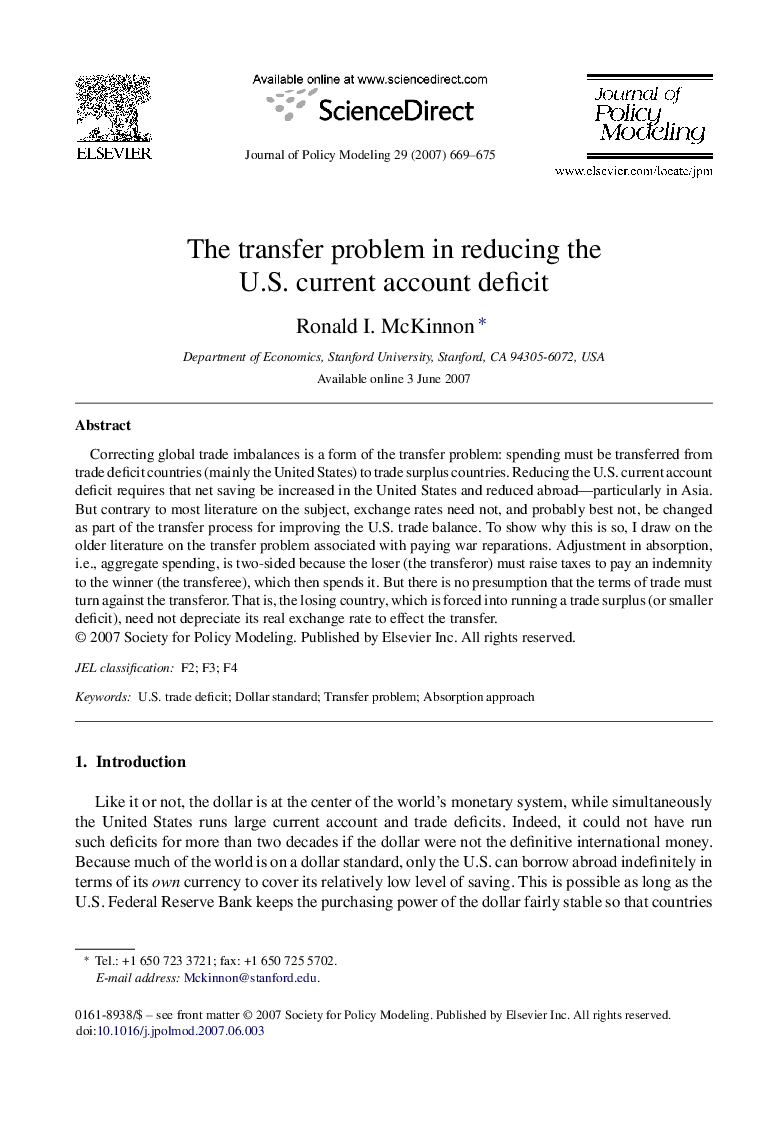| Article ID | Journal | Published Year | Pages | File Type |
|---|---|---|---|---|
| 968180 | Journal of Policy Modeling | 2007 | 7 Pages |
Correcting global trade imbalances is a form of the transfer problem: spending must be transferred from trade deficit countries (mainly the United States) to trade surplus countries. Reducing the U.S. current account deficit requires that net saving be increased in the United States and reduced abroad—particularly in Asia. But contrary to most literature on the subject, exchange rates need not, and probably best not, be changed as part of the transfer process for improving the U.S. trade balance. To show why this is so, I draw on the older literature on the transfer problem associated with paying war reparations. Adjustment in absorption, i.e., aggregate spending, is two-sided because the loser (the transferor) must raise taxes to pay an indemnity to the winner (the transferee), which then spends it. But there is no presumption that the terms of trade must turn against the transferor. That is, the losing country, which is forced into running a trade surplus (or smaller deficit), need not depreciate its real exchange rate to effect the transfer.
